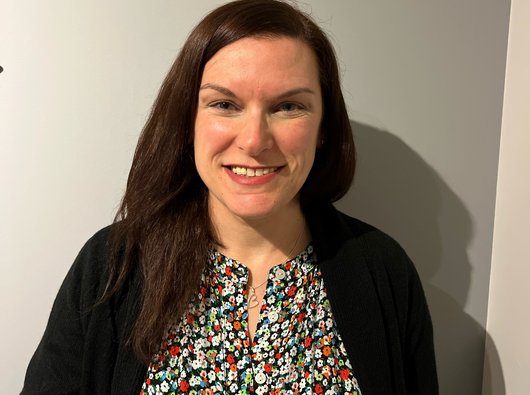What is essential thrombocythaemia (ET)?
Essential thrombocythaemia (ET) is a type of blood cancer that causes your body to make too many blood cells called platelets. It is part of a group of blood cancers called myeloproliferative neoplasms.
Understanding ET
Essential means the cause is not known, thrombo means clotting and cythaemia refers to blood cells.
So, the name describes a problem with blood clotting with an unknown cause. However, this description is in fact out of date, because we now know that essential thrombocythaemia starts with genetic changes that happen during a person’s lifetime.
Most people, including medical staff, prefer to use the short name “ET”.
When you have ET, your body starts making too many blood cells called platelets.
Platelets are blood cells that help your blood to clot. They stick together to stop you bleeding if you have a cut or a bruise.
Like most blood cells, platelets are made inside your bone marrow – the spongy material inside some of your bones. Large cells in your bone marrow called megakaryocytes produce platelets that are released into your bloodstream, ready to stop the bleeding if you are injured.
In ET, the megakaryocytes start to make too many platelets. That means your blood may clot too easily. This can cause a heart attack or stroke and a range of other symptoms.
Treatments for ET aim to manage these symptoms and lower your risk of developing blood clots.
About 2,700 people in the UK are diagnosed with ET every year. There are around 13,000 people currently living with it in the UK.
"I couldn't get the words ‘blood cancer’ out of my head. I felt really shocked and upset. It was more psychological than physical because I didn't have many symptoms at the time."
Anna, living with ET since 2021.

The risk of blood clots and bleeding
If you have too many platelets in your blood, you’re at risk of developing blood clots. The medical name for this is thrombosis.
Clots can cause a range of different problems, depending on which blood vessels are affected:
- In the brain, clots can cause stroke or mini stroke (known as a TIA or transient ischaemic attack).
- In the eyes, clots can cause blurred vision or loss of sight.
- In the heart, they can cause a heart attack.
- In the stomach area (abdomen), they can cause damage to organs such as your liver.
- In the legs, they can cause deep vein thrombosis (DVT). If you have DVT there is a chance that a clot in your leg can break free and travel to your lungs. This is called a pulmonary embolism.
All of these things can cause serious problems and some are life-threatening. So it’s important to be aware of the symptoms of thrombosis. It’s also important to understand that once you’re diagnosed with ET, you can start taking medicine that will bring down your risk of thrombosis.
ET can also cause a higher risk of unusual bleeding (haemorrhage).
It may seem odd that having too many platelets can cause bleeding as well as thrombosis. But bleeding can happen when the number of platelets is very high, and they don’t work normally.
If you are diagnosed with ET, your hospital team will monitor you for unusual bleeding as well as thrombosis.
Causes of ET
We know that ET is caused by specific genetic changes that happen during someone’s lifetime.
We don’t know why this happens, but we know that ET is more common in people over 50 years old, although younger adults can get it. We also know it’s slightly more common in women than men.
Genetic changes and family history
ET starts with a genetic change (a mutation) that causes the over-production of platelets.
Genes are like a set of instructions that tell your cells how to behave, including how to divide to make new cells. Sometimes there’s a copying mistake as the cell divides and that causes a mutation.
We don’t know why genetic mutations happen, but we know that most people with ET have a mutation in one of three specific genes:
- JAK2 – 50 to 60 people in every 100 with ET (50-60%) have the JAK2 gene mutation
- CALR – 25 to 30 people in every 100 with ET (25-30%) have the CALR mutation
- MPL – 3 to 11 people in every 100 with ET (3-11%) have the MPL mutation
These genes normally play a part in controlling how many platelets are produced in your bone marrow. If they mutate, the stem cells in your bone marrow can start producing more platelets than your body needs.
Knowing which genetic mutation you have gives doctors a bit more information about your prognosis (what’s likely to happen in the future). For example, people with the CALR mutation tend to have a lower risk of blood clots (thrombosis) than those with JAK2.
For a few people, tests don’t show any of the three main genetic mutations. This might be because the ET is caused by another genetic mutation that can’t be identified easily. Or there may be another reason for high platelets. Your doctor will investigate, and you may need a test called a bone marrow biopsy to confirm whether ET is the correct diagnosis. If you have ET but you don't have a JAK2, CALR or MPL mutation, this is known as triple negative ET.
In some families there is a faulty gene that controls platelet production. If you have this faulty gene, you are more likely to develop ET, but this is very rare. Ask your hospital team if you are worried this might be the case for you.
Whether or not doctors identify a specific gene mutation, you will receive the best treatment for you, based on your age and fitness, your symptoms, your medical history and your platelet count.

Talk to other people affected by blood cancer
Hear from and connect with people who understand.
Can ET develop into another kind of blood cancer?
Sometimes, ET can progress to another type of blood cancer. It may develop into another type of MPN called myelofibrosis, or into acute myeloid leukaemia (AML). It’s rare for either of these things to happen.
If you want to know more about the possibility of ET transforming to another blood cancer, read our information about the risk of developing another blood cancer.
Some people with ET also have features of another type of MPN called polycythaemia vera (PV). ET and PV have a lot in common and occasionally, they can overlap.
In PV, blood stem cells in the bone marrow produce too many red blood cells – the cells which carry oxygen round the body. This makes the blood thicker than normal, raising the risk of thrombosis. So, treatment for PV and ET has the same aim – to manage the risk of thrombosis – and some treatments for ET and PV are the same.
If you are told you have features of both ET and PV, ask your hospital team to explain what this means and how it might affect your treatment and monitoring. Your doctor will choose the best treatment for your condition and your individual circumstances, whether you have ET, PV or a combination of the two.
